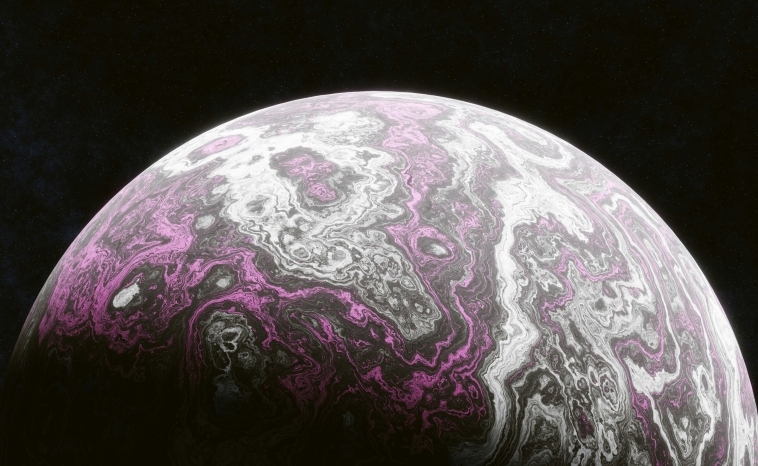What Might Aliens Look Like?

What might aliens look like? Join us as we explore imaginative concepts and scientific theories about the appearance of extraterrestrial life forms!
The universe is a vast expanse, teeming with mystery and intrigue. But one thing we’re yet to figure out: is it also teeming with life? Among the biggest questions humanity has pondered, that one surely sits near the top. But another great question we sometimes overlook is, if they’re out there, what might aliens look like?
In this article, we’ll explore the potential appearance of alien life forms. We’ll consider everything from the building blocks of life and the habitability of exoplanets to some of the possible evolutionary possibilities. We’ll also touch on the perplexing Fermi Paradox and our ongoing search for extraterrestrial life. So, ready for an interstellar adventure? Then let’s set off!
What Might Aliens Look Like – The Building Blocks of Life

Life, at least, as we know it, hinges on a few specific essential elements. Here on Earth, carbon, hydrogen, nitrogen, oxygen, phosphorus, and sulphur form the basis of all known living organisms. These elements combine to create complex molecules, things like DNA, proteins, and lipids. But what if alien life happens to be built on something else entirely?
Silicon-based life forms are a popular hypothesis among scientists. Like carbon, silicon can form stable bonds with other elements and create complex molecules. So, in an environment where carbon is scarce but silicon is abundant, silicon-based life could potentially thrive. Imagine creatures with sturdy, rock-like exteriors and intricate silicon structures!
Another possibility is life based on ammonia or methane. Planets with frigid temperatures are typically too cold for water to remain liquid. However, ammonia and methane could serve as solvents for biochemical reactions. Alien beings in these environments might have antifreeze-like blood coursing through their veins, a fascinating adaptation to extreme conditions.
Habitability of Exoplanets

In our hunt for extraterrestrial life, our efforts often begin with the search for habitable exoplanets—those residing in their star’s “Goldilocks zone”. Here, conditions can be just right for liquid water. NASA’s Kepler mission has discovered thousands of such planets, each a potential host for alien life. But what makes a planet truly habitable?
On Earth, extremophiles—organisms that thrive in extreme environments—show us that life can exist in the most unlikely places. From the scorching hydrothermal vents of the ocean floor to the acidic hot springs of Yellowstone, life finds a way. These earthly analogues suggest that alien life could thrive in conditions far beyond our cosy, temperate norms.
Take, the icy moon Europa. Beneath its frozen surface lies a vast ocean, kept liquid by tidal forces. Could alien fish swim in these dark, frigid waters? Then there’s Titan, Saturn’s largest moon. With lakes of liquid methane and ethane, perhaps methane-based microbes float within these alien seas!
What Might Aliens Look Like – The Evolution of Life

Evolution shapes life through a series of adaptations to the environment. And earth’s history offers us a glimpse into how life could evolve on other planets. The diversity of life on our planet—from microscopic bacteria to majestic blue whales—demonstrates just how varied life really can be!
If an alien world has a similar evolutionary trajectory, we might find creatures with familiar traits. Limbs for movement, eyes for seeing, and mouths for eating are all pretty advantageous adaptations. However, alternate evolutionary paths could give rise to completely novel forms. Imagine a world where flight is the dominant mode of travel, resulting in a planet teeming with winged beings.
On planets with higher gravity, life forms might be stockier and more muscular to cope with the increased weight. On the other hand, low-gravity worlds might feature lanky and elongated creatures that glide effortlessly through the air. Evolutionary pressures, such as predation and competition for resources, would shape these beings in ways we can scarcely imagine.
The Fermi Paradox
In 1950, physicist Enrico Fermi posed a tantalising question: if intelligent alien life exists, where is everybody? With billions of stars in our galaxy alone, many of which host potentially habitable planets, it seems likely that we’re not alone. And yet, the silence is deafening.
Scientists have offered a number of hypotheses that might explain this paradox. One possibility is the Great Filter theory, suggesting that while life might be common, natural barriers make intelligent life exceedingly rare. That could be something like life forming on a planet that orbits the ‘right’ kind of star, or encountering the right set of conditions to move beyond single-cell life. If this is true, there could also be monumental obstacles that prevent potential civilisations from advancing to the point of interstellar communication.
Another theory is that advanced alien civilizations are deliberately avoiding us or are simply uninterested. They might view humanity as primitive or dangerous, choosing to observe us from afar. Alternatively, they could be using communication methods we haven’t yet discovered, such as neutrino signals or gravitational waves. And if the Dark Forest hypothesis is correct, any civilisations that might be out there are purposefully staying quiet to avoid the attention of aggressive aliens looking to expand their territory. If that’s true, let’s hope they don’t find either of our Voyager probes!
What Might Aliens Look Like? Final Thoughts

Drawing from the diversity of life on Earth, we can envision a myriad of possibilities. Just as Earth’s flora and fauna exhibit an astonishing range of forms and functions, so too might alien life.
On any planet, we can’t overlook the role of the environment in shaping physical traits. On planets with perpetual twilight, aliens might have evolved large, sensitive eyes to capture every last photon of light they can. In contrast, creatures on a sun-drenched world could possess protective layers of pigment to shield against harmful radiation.
Locomotion is another intriguing factor to think about. On watery planets, we might encounter beings with fins, tentacles, or jet propulsion systems, akin to squids. Land-dwellers could range from multi-legged arthropods to bipedal mammals, each adapted to their unique terrain.
But whatever the case, our quest to discover alien life is far from over. Technological advancements in telescopes and space probes have exponentially increased our chances of finding extraterrestrial neighbours. Missions like the James Webb Space Telescope and SETI (Search for Extraterrestrial Intelligence) are at the forefront of this fascinating search.
What’s more, astrobiologists are continually developing new methods to detect biosignatures—indicators of life—on distant planets. From analysing atmospheric gases to detecting surface anomalies, these techniques bring us closer to answering the age-old question of whether we are alone in the universe. And if we can answer that question, one day, we might just find out what aliens really look like!
One Million Stars

While we haven’t discovered any neighbours yet, it doesn’t mean we can’t explore the neighbourhood. And with the OSR’s One Million Stars app, you can do just that! Explore the stars of the Milky Way from the comfort of your web browser, learning more about famous astronomer-named stars – or find your own named star!

